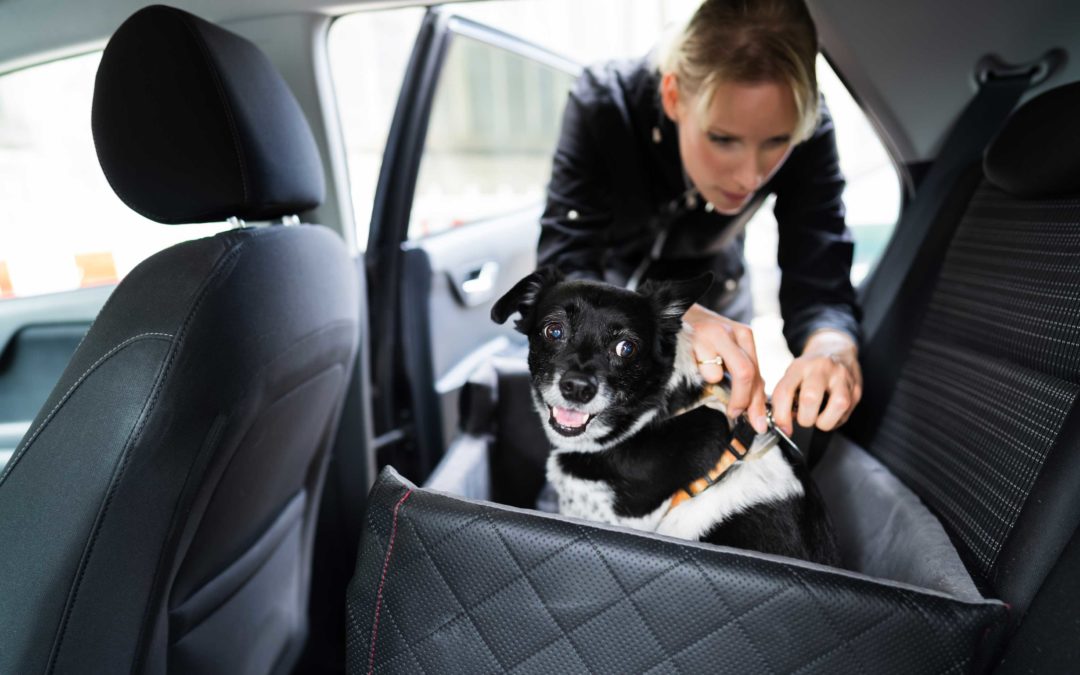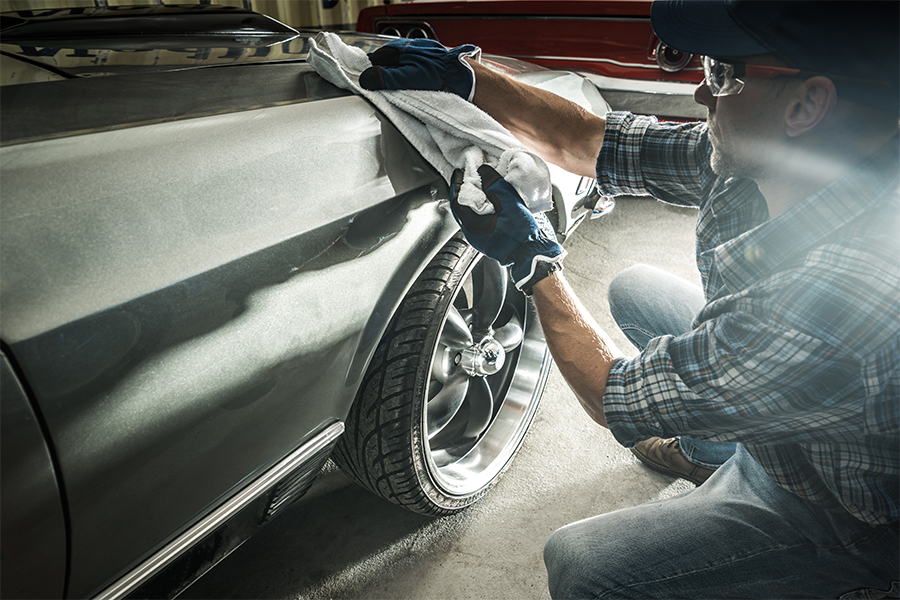If Fido and Fluffy ride with you for pleasure or for their routine vet and groomer visits, take note of these guidelines for driving safely with pets. With a little planning, you can make your trip a treat for everyone involved.
Driving safely with dogs
Secure your dog in a carrier or with a belt. Small dogs are best kept in a carrier, in the back seat of your car. Small dogs sitting in the front passenger seat could be crushed by the airbag in a crash, even if they are in a carrier.
Larger dogs whose carriers may not fit in the car comfortably should be restrained with a belt that attaches to their harness. You can also purchase a barrier that separates the back seat from the front seat, to prevent your dog from jumping into the front seat while you’re driving.
Never leave your dog loose and unrestrained in the car. Like any large, unrestrained object in a vehicle, a loose dog can become a projectile in a crash or sudden stop, injuring the dog and others. Also, an unrestrained dog can become a serious distraction to the driver. For these same reasons, never drive with your dog in your lap, no matter how small or well behaved they are.
Follow the law. While there are no laws requiring that your dog be restrained inside the car, both Maine and New Hampshire have laws stating that any dog riding in the open bed of a pickup truck must be restrained. Massachusetts law also indirectly prohibits driving a car with a dog in your lap (learn more about dog restraint laws).
Teach your dog to love the car. While most dogs enjoy a ride in the car, some are nervous travelers. And just like some people, some dogs get car sick from the motion of the vehicle. Here are a few tips to help your pooch love the road:
- Get your dog to associate “car” with “fun.” If the only place you ever take your dog in the car is the vet or the kennel, they might not be too keen on taking a ride. Before taking a longer trip with your dog, prepare by taking them on some fun short excursions: the dog park, a pet store to get a toy and a treat, a cruise around the neighborhood, etc.
- Stock up on car-only treats. Buy some special toys or treats that your dog gets only when they’re going for a ride. These goodies will train your dog to think more positively about the car, and also keep them occupied along the way.
- Talk to your vet. For dogs who have a problem with car sickness, ask your vet what they recommend to keep them comfortable on a longer trip. There are medications available for dogs, similar to those taken by people, for sea or air sickness. Peppermint or ginger-flavored treats can sometimes help, too.
Driving safely with cats.
Unlike dogs, most cats dislike riding in the car. While you may never get Fluffy or Mittens to look forward to car trips, these tips can help you make it safer and less upsetting for them.
Keep your cat in a carrier in the back seat. Belt the carrier into the seat with the safety belt. Don’t feel guilty about using the carrier; most cats are comforted by small, enclosed spaces. This is why they enjoy squeezing themselves into cardboard boxes. Since cats don’t enjoy road trip scenery as much as dogs, covering the carrier with a blanket or towel may bring comfort to your fluffy feline.
As with dogs or any other pets, never leave your cat unrestrained in a vehicle.
Gradually acclimate your cat to the car and carrier. If your cat is not used to the carrier, take it slow. First, put the cat in the carrier and place the carrier in the back seat, without starting the engine. Then give the cat a treat. After trying this a few times, place the carrier in the car, start the engine, and then give the treat. Then try a few trial trips close to home.
Talk to your vet. Like dogs and people, cats can suffer from car sickness. Symptoms include drooling, vomiting, and diarrhea. If you think your cat has car sickness, ask your vet to prescribe medication before you travel. Also, if car trips are especially traumatizing for your cat, your vet may be able to prescribe a mild sedative to ease the journey.
Other tips for driving safely with pets:
- Take frequent breaks. If you’re taking a longer car trip, stop at least every 2 to 3 hours for potty breaks, snacks, and water.
- Make sure your pets have identification. Be sure they wear a tag with your address and contact information. If they are microchipped, verify their microchip information is up to date.
- Get your pets some exercise before you leave. Walk your dog or play with your cat to tire them out a little before you hit the road.
- Never leave your pet in the car alone. The interior of a car can reach dangerous temperatures in a short time, even when the temperatures outside are not very high.
Once you’ve mastered driving safely with your pets, they can become seasoned travelers, ready to accompany you on all your favorite family adventures. Summer’s just around the corner — get Fido and Fluffy ready now!



